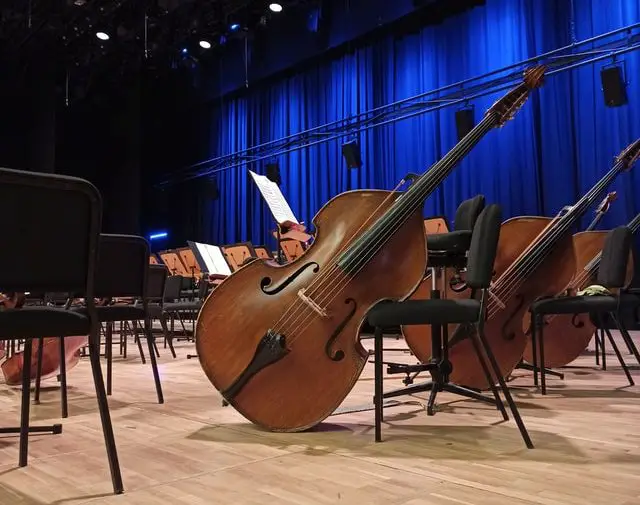You can expect an average Cello weight between 5 and 7 pounds (2.2 – 3.0 kg) by themselves. If you include the hard cello case, bow, and other cello accessories, the weight can go up to 20 to 25 pounds.
The weight of the cello varies depending on the size and the material used to make it. We’ll go further later.

Although in Italian, violoncello means small violin, in fact, the cello is classified as a large musical instrument. The cello is the second largest musical instrument after the contrabass in the violin family.
Generally, a cello weighs about 5 to 7 pounds. This weight will depend on the type of wood used as the material for making the cello and its size.
The weight of the cello is also influenced by several factors such as the density of the wood, the thickness of the wood, and the types of other materials used in its manufacture. Other materials can be Hardcase, bows, and other accessories. It’s not even impossible that a complete cello would weigh about 20 pounds.
Large instruments do require more power to produce sound. Therefore, the cello is classified as a large instrument that is sounded through the vibrations of the wood that arise when the bow rubs against the strings on the cello so that the cello still produces a beautiful sound.
Violoncello or often also referred to as the cello, is an ancient musical instrument originating from Europe. “Violocello” is Italian for “little violone.” This musical instrument is still included in the violin family, and it has a low note one octave below the alto violin.
Types of Cello
There are many types of cello, depending on what you classify them by. This time I will classify them based on size.
| Types of Cellos | Weight (est) | Age |
| 4/4 | 5-7 lbs | 15+ Years Old |
| 7/8 | 5-6 lbs | 14+ Years Old |
| 3/4 | 4-6 lbs | 11-13 Years Old |
| 1/2 | 3-5 lbs | 6 – 8 Years Old |
| 1/4 | 3-4.5 lbs | 5-6 Years Old |
| 1/8 | 2-4 lbs | 4-5 Years Old |
| 1/10 | 2-3.5 lbs | 3 to 4 Years Old |
Story of Cello
In the XVI century, Andrea Amati made his first cello. At that time, the cello that Amati made was still very traditional. He combined several kinds of wood to form the cello.
The top of the cello was made with spruce wood, while the neck, back and thick sides were made using maple wood. He also used willow or poplar wood not infrequently, while for the strings, Amati used the intestines of lamb. At that time, the sound produced by the cello was relatively short, then over time, cello strings were replaced with metal materials, like silver wire or steel wire.
With these metal strings, the sound produced is even louder. Amati’s cello later became really famous that it earned the nickname “King Amati.” This cello is still enshrined at the Museum of Art in New York.
Usually, the cello can be played singly or in collaboration with other musical instruments, such as when played in an orchestra. A cellist will place the cello’s body between their legs, with the bottom end of the cello touching the floor. The cellist must carefully consider the sitting position, a cellist should sit in an upright position and not bend, while the position of the right foot forms an angle of 45 to 60 ° and the left foot is slightly forward. This position will be very influential because the cello is relatively large.



